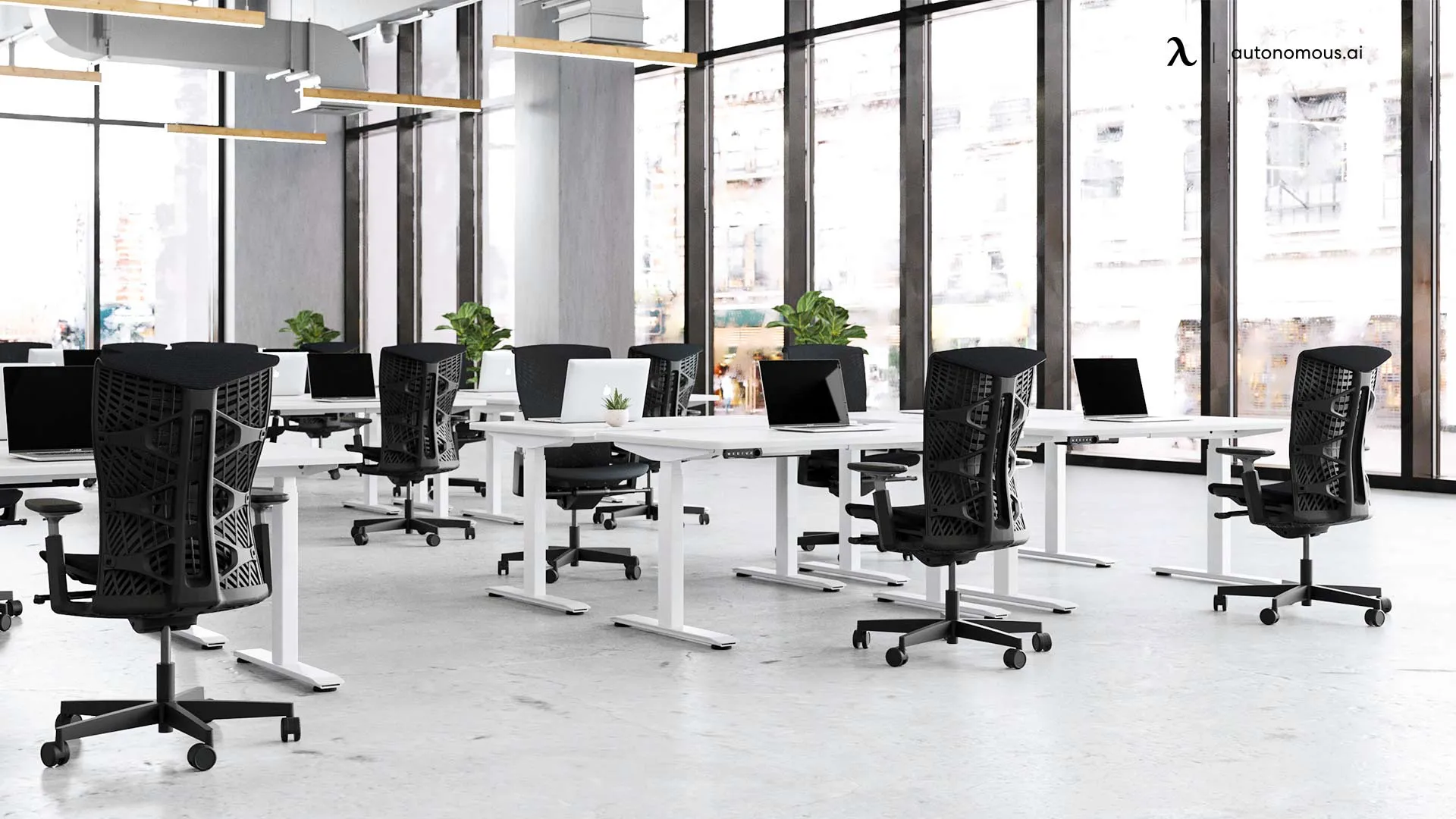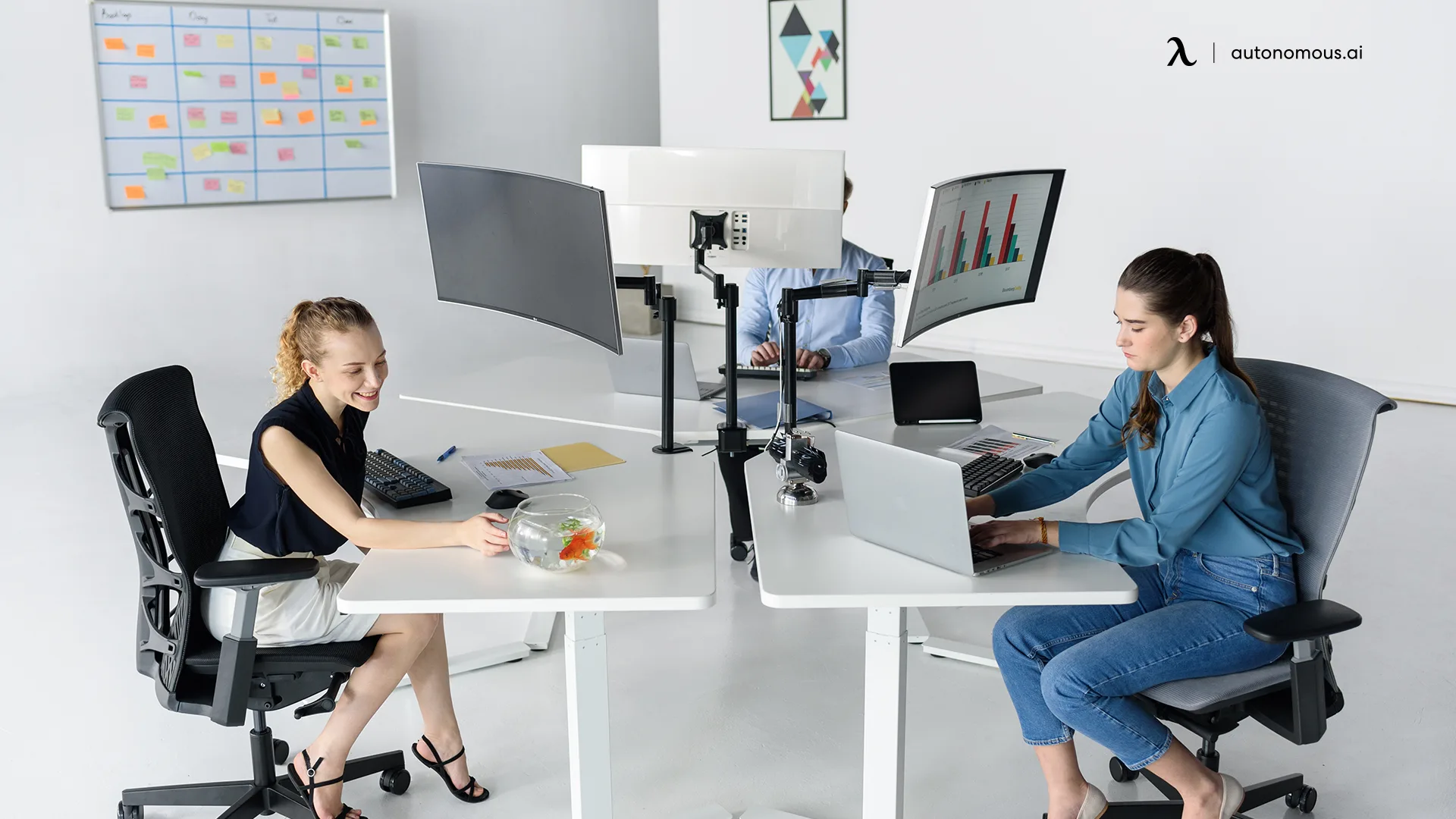
In a minimalist office, the role of natural light goes beyond mere aesthetic appeal. It serves as a key element in creating a harmonious and productive workspace. Natural light has the power to enhance mood, improve focus, and boost overall well-being. This article explores the significant role of natural light in a minimalist office and highlights its numerous benefits for productivity and employee satisfaction. So, let’s shed some light on the importance of natural light in creating a minimalist office that promotes creativity and success.
Benefits of Natural Light in a Minimalist Office
Enhances Mood and Productivity
In a minimalist office, natural light plays a crucial role in enhancing mood and productivity. The abundance of natural light can create a positive and uplifting environment, making employees feel more motivated and energized. Exposure to natural light has been proven to increase serotonin levels, which is a neurotransmitter responsible for regulating mood and promoting feelings of happiness and well-being. With a boost in mood, employees are more likely to be productive, focused, and engaged in their work.
Reduces Eyestrain and Fatigue
Working in a well-lit space with ample natural light reduces the strain on the eyes. Natural light is softer and more balanced compared to artificial lighting, which can often cause eye fatigue and discomfort. By incorporating more natural light into a minimalist office, employees can minimize the risk of eyestrain and headaches, allowing them to work for longer periods without experiencing visual fatigue.
Improves Cognitive Function
Studies have shown that exposure to natural light has a positive impact on cognitive function. Natural light stimulates the brain and improves mental clarity, concentration, and creativity. Employees working in spaces with abundant natural light are more likely to experience heightened cognitive function, leading to improved problem-solving skills and innovative thinking. By optimizing natural light in a minimalist office, employers can create an environment that promotes cognitive abilities and enhances overall work performance.
Boosts Vitamin D Levels
Natural light is the most significant source of vitamin D, a crucial nutrient that affects various aspects of our health. Incorporating natural light in a minimalist office allows employees to soak up some essential vitamin D, which is vital for bone health, immune function, and mood regulation. By designing office spaces that prioritize natural light, employers can help employees maintain healthy vitamin D levels, leading to improved well-being and overall health.
Creates a Sense of Connection with Nature
A minimalist office that embraces natural light also creates a sense of connection with the outdoor environment. Being surrounded by natural light not only allows employees to enjoy the beauty of the sunlight but also provides a glimpse of the outside world. This connection with nature can have a calming effect on the mind, reduce stress, and create a more pleasant working environment. By integrating natural light into the minimalist office design, employers foster a sense of well-being and a deeper connection with the natural world.
Design Considerations for Maximizing Natural Light
Choosing the Right Location
To maximize natural light in a minimalist office, careful consideration should be given to the location of the office. Ideally, the office should be situated in a position that receives ample sunlight throughout the day. South-facing offices typically receive the most sunlight, while north-facing offices may require additional measures to maximize natural light.
Optimizing Window Placement and Size
The placement and size of windows greatly affect the amount of natural light that enters a minimalist office. Strategically positioning windows to capture the most sunlight and choosing larger window sizes can significantly increase the amount of natural light in the space.
Using Reflective Surfaces
Using reflective surfaces, such as glass tabletops or mirrors, can help distribute and amplify natural light in a minimalist office. These surfaces bounce the light around the room, reducing shadows and enhancing the overall brightness.
Strategic Use of Artificial Lighting
While the focus is on maximizing natural light, artificial lighting should also be strategically used to supplement natural light when needed. Using adjustable lighting fixtures, such as dimmers or task lighting, allows employees to maintain optimal lighting conditions throughout the day and adapt to changing natural light levels.

Minimizing Glare and Heat Gain
Installing Window Treatments
To minimize glare and heat gain in a minimalist office, installing window treatments such as blinds, curtains, or shades can be beneficial. These treatments allow employees to control the amount of sunlight entering the space, reducing glare and preventing overheating during hot summer months.
Using Solar Control Films
Solar control films can be applied to windows to minimize heat gain while still allowing natural light to penetrate the space. These films help regulate temperature and prevent uncomfortable glare from affecting employees’ productivity.
Employing Interior Design Elements
Interior design elements, such as light-colored walls, furniture, and flooring, can help minimize glare by reflecting natural light more evenly throughout the space. Additionally, incorporating matte finishes and diffusers in lighting fixtures can reduce direct glare and create a softer, more comfortable working environment.
Utilizing Natural Light for Workplace Productivity
Organizing Workstations
When utilizing natural light for workplace productivity in a minimalist office, it is crucial to organize workstations in a way that maximizes exposure to natural light. Placing desks near windows or using transparent dividers can help ensure that employees benefit from natural light while working.
Creating Collaborative Spaces
Incorporating collaborative spaces near windows allows employees to experience the benefits of natural light while engaging in group work or discussions. These areas can also help foster a sense of creativity and inspiration, resulting in more effective collaboration among employees.
Designing Breakout Areas
Designing breakout areas near windows provides employees with a space to unwind and relax while still benefiting from natural light. Breakout areas with comfortable seating and natural light can promote employee well-being, enabling them to recharge and return to work with increased focus and productivity.

Integrating Natural Light with Minimalist Aesthetics
Emphasizing Clean Lines and Simplicity
Minimalist aesthetics focus on clean lines, simplicity, and decluttered spaces. Integrating natural light with a minimalist aesthetic involves emphasizing these design principles. By keeping the office space open and uncluttered, natural light can freely flow and illuminate the workspace, enhancing the overall visual appeal.
Choosing Light-Reflecting Materials
Materials with light-reflecting properties, such as glass, stainless steel, or high-gloss finishes, can help maximize the impact of natural light in a minimalist office. These materials bounce and reflect the light, creating a bright and airy atmosphere that complements the minimalist design.
Utilizing Natural Color Palettes
Choosing a natural color palette, consisting of light neutral tones, can further enhance the integration of natural light in a minimalist office. Light-colored walls, flooring, and furniture reflect natural light, creating a soothing and harmonious environment that promotes focus and tranquility.
Maximizing Energy Efficiency with Natural Light
Reducing Reliance on Artificial Lighting
By maximizing natural light in a minimalist office, employers can significantly reduce their reliance on artificial lighting during daylight hours. This reduction in artificial lighting not only leads to energy savings but also creates a more sustainable and eco-friendly workplace.
Decreasing Heating and Cooling Expenses
Natural light can also contribute to energy efficiency by reducing the need for excessive heating or cooling. Properly designed minimalist offices that harness natural light can minimize the usage of heating systems during the day, resulting in reduced energy consumption and lower utility expenses.
Implementing Sustainable Window Solutions
To maximize energy efficiency, implementing sustainable window solutions is essential. Energy-efficient windows, such as those with low-emissivity (low-E) coatings or double glazing, can minimize heat transfer and maintain a comfortable indoor temperature, reducing the need for additional heating or cooling.

Optimizing Natural Light for Employee Well-being
Enhancing Circadian Rhythms
Natural light in a minimalist office helps align employees’ circadian rhythms, which regulate their sleep-wake cycles. Exposure to natural light during the day promotes alertness and productivity, while reduced exposure in the evening encourages relaxation and better quality sleep, ultimately leading to improved employee well-being.
Reducing Stress and Anxiety
Studies have shown that exposure to natural light can reduce stress and anxiety levels in employees. The calming effect of natural light helps create a more peaceful and serene working environment, reducing feelings of tension and promoting a positive mental state.
Promoting Overall Health and Well-being
Natural light has a multitude of benefits that contribute to overall employee health and well-being. From increased vitamin D levels to improved mood and cognitive function, a minimalist office design that prioritizes natural light fosters a healthier and happier workforce.
Health and Safety Considerations
Ensuring Sufficient Illumination
When designing with natural light in mind, it is crucial to ensure that the office space is adequately illuminated. Proper lighting levels promote safety and reduce the risk of accidents or injuries caused by poor visibility. Incorporating artificial lighting as a supplement ensures consistent illumination, especially in areas with limited natural light.
Preventing Glare-Related Discomfort
Glare from excessive sunlight can cause discomfort and affect productivity. To prevent glare-related issues, it is essential to use window treatments or films that filter or diffuse sunlight, reducing the intensity of light and minimizing the risk of glare.
Addressing Privacy Concerns
While embracing natural light, it is important to consider privacy concerns. Sensitive areas or workstations can be strategically placed away from direct sunlight or near windows with frosted glass or blinds. This ensures privacy for individuals while still allowing them to benefit from the benefits of natural light.

Overcoming Challenges in Natural Light Design
Dealing with Limited Exposure Opportunities
Some office spaces may have limited opportunities for natural light exposure due to building constraints or location. In these cases, creative solutions such as light tubes or skylights can be incorporated to bring natural light into the space, even if direct sunlight is unavailable.
Compensating for North-facing Offices
North-facing offices typically receive less direct sunlight throughout the day. To compensate for the limited natural light, incorporating additional artificial lighting options that mimic the qualities of natural light can help create a more balanced and inviting workspace.
Managing Changing Light Conditions
Natural light changes throughout the day, with variations in intensity and angle. To effectively manage changing light conditions, adjustable window treatments, such as blinds or shades, can be used to regulate the amount of sunlight entering the space. Additionally, flexible artificial lighting options can be utilized to supplement natural light and maintain consistent illumination.
Case Studies: Successful Natural Light Integration in Minimalist Offices
Company A: Emphasis on Productivity and Employee Satisfaction
Company A prioritizes natural light as a key element in its minimalist office design. By strategically positioning workstations near windows and incorporating collaborative areas with ample natural light, employees benefit from enhanced mood, productivity, and overall job satisfaction. The use of light-reflecting surfaces and a natural color palette further complements the minimalist aesthetic, creating a visually appealing and inviting workspace.
Company B: Incorporating Biophilic Design Principles
Company B integrates natural light into its minimalist office through a biophilic design approach. Large, strategically placed windows allow for maximum sunlight penetration while providing employees with views of nature. Indoor plantings and green walls further enhance the connection with nature, fostering a sense of well-being and tranquility. This seamless integration of natural light and biophilic elements creates a harmonious and sustainable office environment.
Company C: Balancing Natural Light and Privacy
Company C addresses privacy concerns while maximizing natural light in its minimalist office design. By utilizing frosted or tinted glass, employees in sensitive areas can enjoy the benefits of natural light while maintaining their privacy. Carefully designed window treatments and artificial lighting solutions ensure consistent illumination and minimize glare, creating a comfortable and productive workspace for all employees.
In conclusion, natural light plays a vital role in a minimalist office design, offering numerous benefits to employees and the overall workplace environment. By considering design considerations, minimizing glare and heat gain, utilizing natural light strategically for workplace productivity, integrating it with minimalist aesthetics, maximizing energy efficiency, optimizing natural light for employee well-being, considering health and safety, overcoming design challenges, and exploring successful case studies, employers can create minimalist offices that prioritize natural light and enhance the well-being and productivity of their employees. So, when designing your minimalist office, embrace the power of natural light and experience the transformative impact it has on your workspace.

